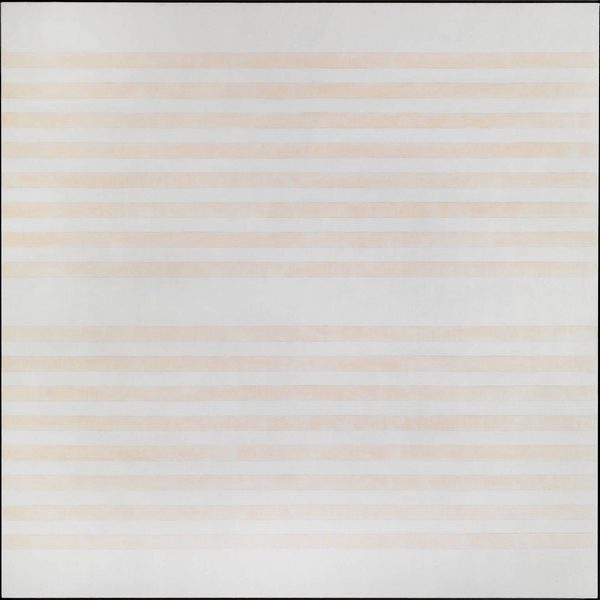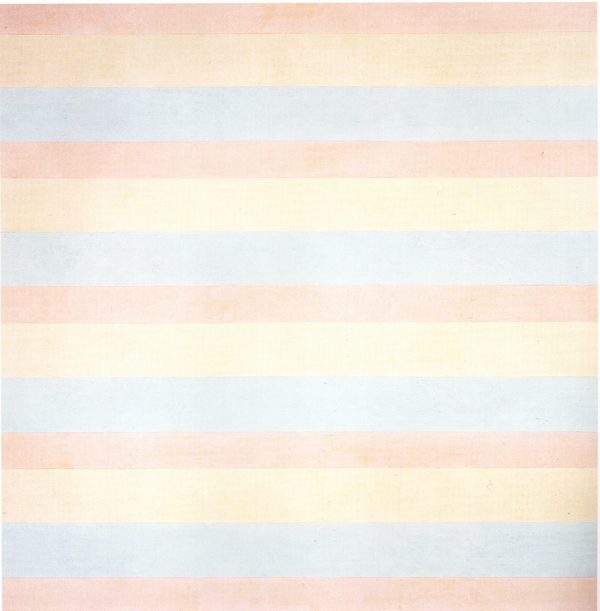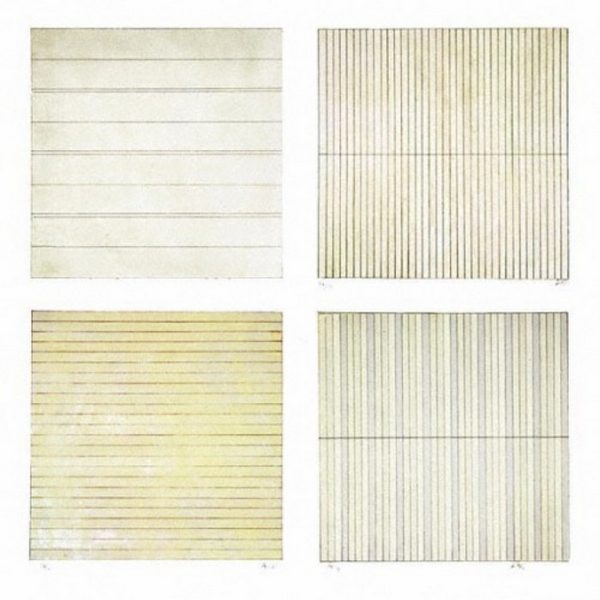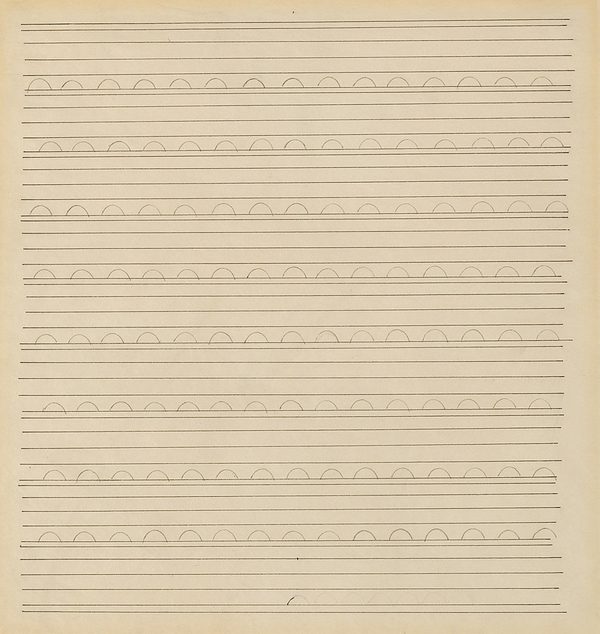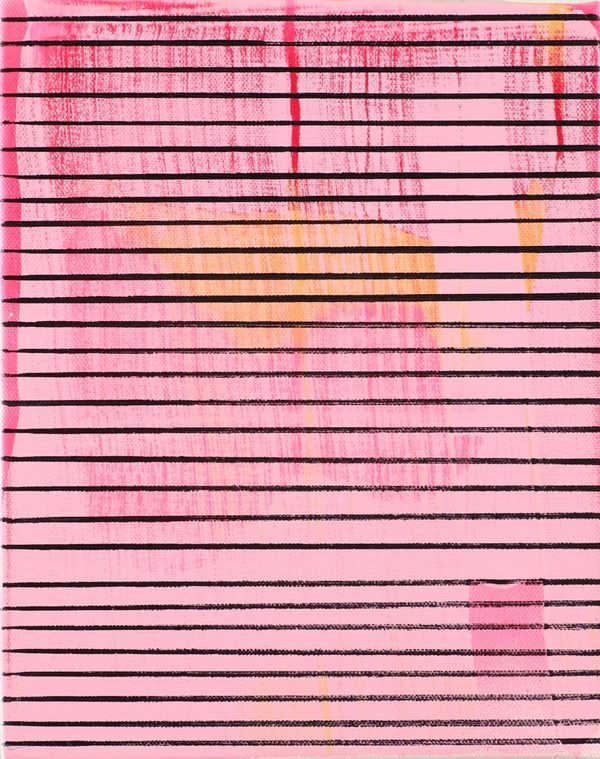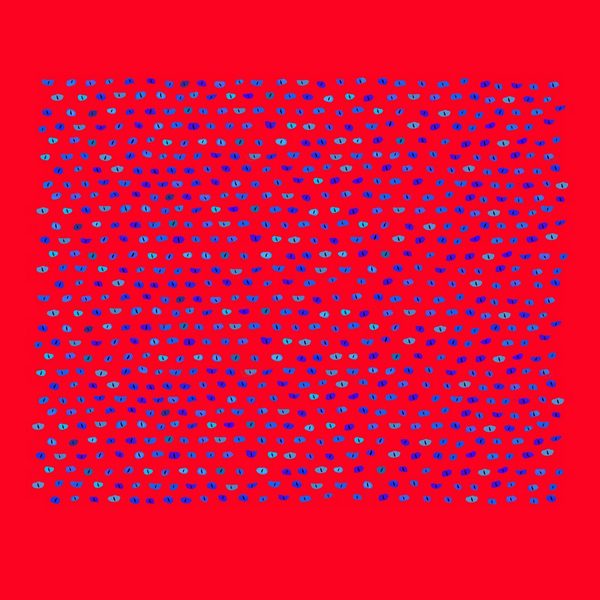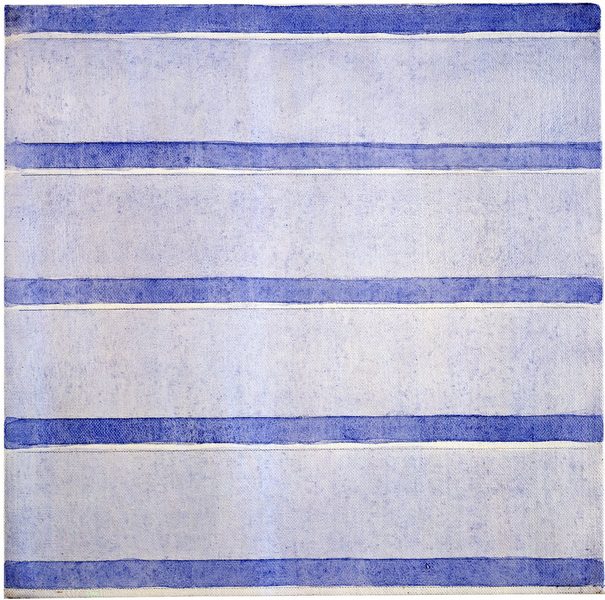TRACES:Agnes Martin
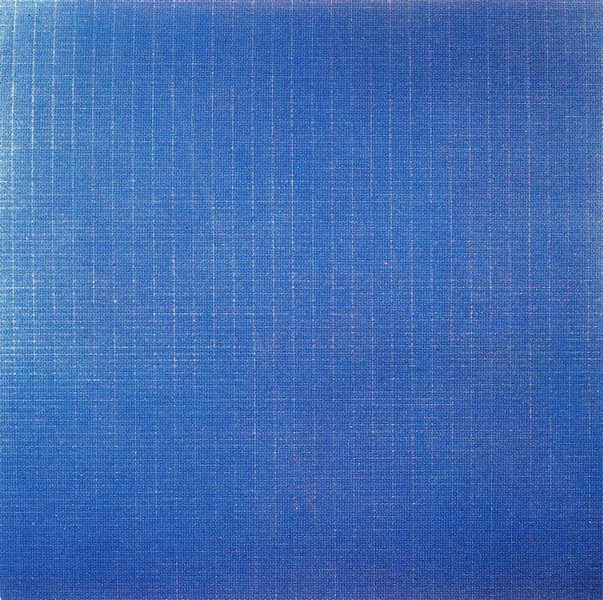 Today is the occasion to bear in mind Agnes Martin (22/3/1912-16/12/2004), Agnes Martin imparted a legacy of abstraction that has inspired generations of artists. Using a limited palette and a geometric vocabulary, her works are inscribed with lines or grids that hover over subtle grounds of color. Martin’s work is recognized as pure abstraction, in which space, metaphysics and internal emotional states are explored through painting, drawing and printmaking. Through documents or interviews, starting with: moments and memories we reveal out from the past-unknown sides of big personalities, who left their indelible traces in time and history…
Today is the occasion to bear in mind Agnes Martin (22/3/1912-16/12/2004), Agnes Martin imparted a legacy of abstraction that has inspired generations of artists. Using a limited palette and a geometric vocabulary, her works are inscribed with lines or grids that hover over subtle grounds of color. Martin’s work is recognized as pure abstraction, in which space, metaphysics and internal emotional states are explored through painting, drawing and printmaking. Through documents or interviews, starting with: moments and memories we reveal out from the past-unknown sides of big personalities, who left their indelible traces in time and history…
By Efi Michalarou
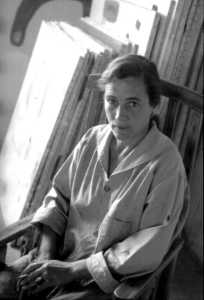 Agnes Martin was an American Abstract painter. Often referred to as a Minimalist, Martin considered herself an Abstract Expressionist. After hearing lectures by the Zen Buddhist scholar D. T. Suzuki at Columbia, she became interested in Asian thought, not as a religious discipline, but as a code of ethics, a practical how-to for getting through life. A few years following graduation, Martin matriculated at the University of New Mexico, Albuquerque, where she also taught art courses before returning to Columbia University to earn her M.A. (1952). She left New York City in 1967 and settled in New Mexico. She built an adobe home for herself there. She lived alone all her adult life. After she left from New York and moved to Cuba, New Mexico, in 1967, she did not paint for seven years. Martin praised Mark Rothko for having “Reached zero so that nothing could stand in the way of truth”. Following his example, she also pared down to the most reductive elements to encourage a perception of perfection and to emphasize transcendent reality. Her paintings, statements, and influential writings often reflected an interest in Eastern philosophy, especially Taoist. Because of her work’s added spiritual dimension, which became more and more dominant after 1967, she preferred to be classified as an abstract expressionist. Martin worked only in black, white, and brown before moving to New Mexico. However, she returned to painting in 1974 and produced a number of works in which she replaced neutral tones with brighter color. After 1973, she exhibited regularly and major traveling exhibitions. According to a filmed interview with her which was released in 2003, she had moved from New York City, only when she was told her rented loft-workspace-studio would be no longer available because of the building’s imminent demolition. She went on further to state that she could not conceive of working in any other space in New York. When she died at age 92, she was said not to have read a newspaper for the last 50 years.
Agnes Martin was an American Abstract painter. Often referred to as a Minimalist, Martin considered herself an Abstract Expressionist. After hearing lectures by the Zen Buddhist scholar D. T. Suzuki at Columbia, she became interested in Asian thought, not as a religious discipline, but as a code of ethics, a practical how-to for getting through life. A few years following graduation, Martin matriculated at the University of New Mexico, Albuquerque, where she also taught art courses before returning to Columbia University to earn her M.A. (1952). She left New York City in 1967 and settled in New Mexico. She built an adobe home for herself there. She lived alone all her adult life. After she left from New York and moved to Cuba, New Mexico, in 1967, she did not paint for seven years. Martin praised Mark Rothko for having “Reached zero so that nothing could stand in the way of truth”. Following his example, she also pared down to the most reductive elements to encourage a perception of perfection and to emphasize transcendent reality. Her paintings, statements, and influential writings often reflected an interest in Eastern philosophy, especially Taoist. Because of her work’s added spiritual dimension, which became more and more dominant after 1967, she preferred to be classified as an abstract expressionist. Martin worked only in black, white, and brown before moving to New Mexico. However, she returned to painting in 1974 and produced a number of works in which she replaced neutral tones with brighter color. After 1973, she exhibited regularly and major traveling exhibitions. According to a filmed interview with her which was released in 2003, she had moved from New York City, only when she was told her rented loft-workspace-studio would be no longer available because of the building’s imminent demolition. She went on further to state that she could not conceive of working in any other space in New York. When she died at age 92, she was said not to have read a newspaper for the last 50 years.
*She was awarded with the Golden Lion for Lifetime Achievement at the Venice Biennal (1997)

